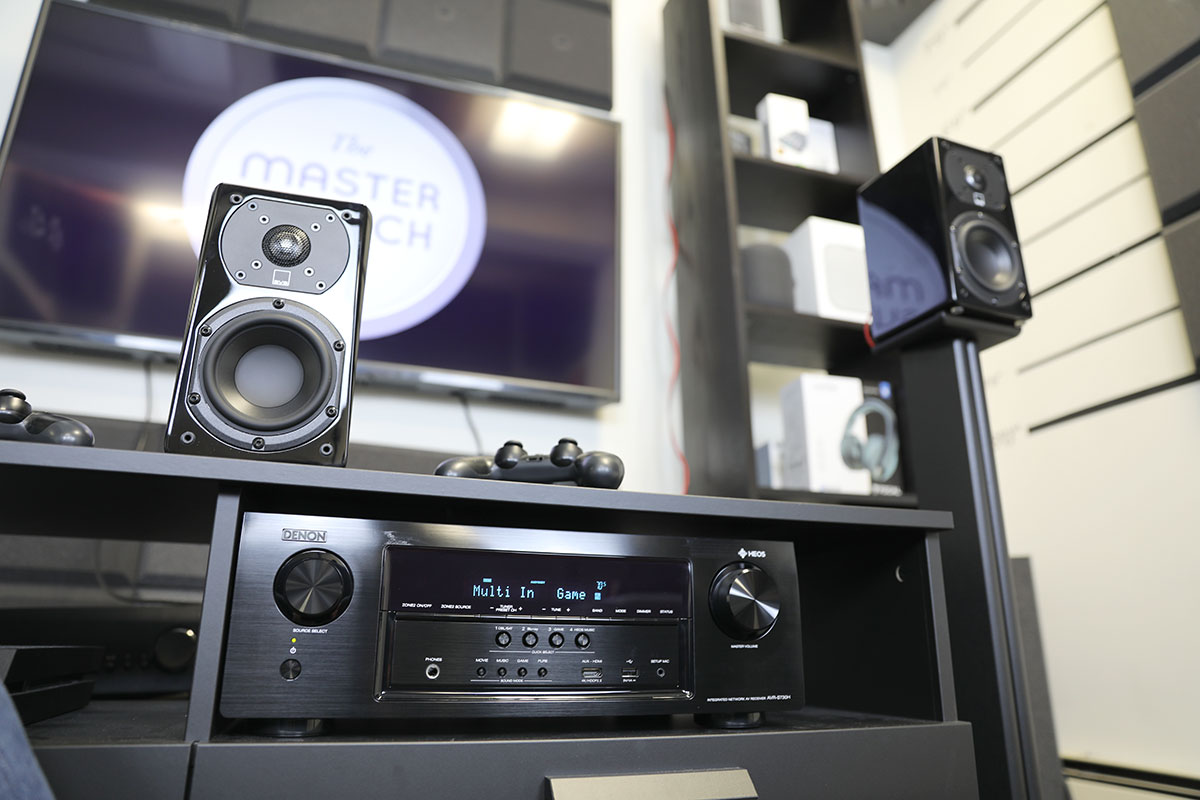
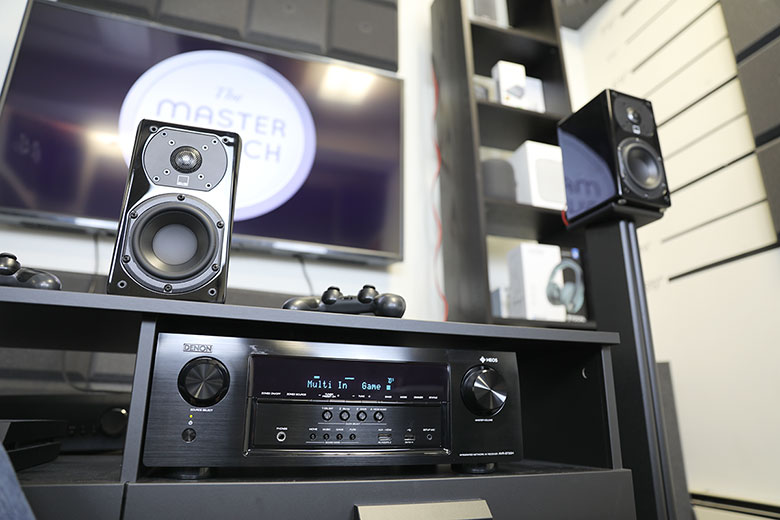
The Master Switch


The Master Switch
If you’re ready to throw down some money for a home theater system with multiple speakers, you’ll want to make sure you choose the right one. Home theater can be a confusing topic, but fortunately, we can help you navigate it. Here, we’ve broken down the key steps in choosing a home theater system, from surround sound and wireless systems to subwoofers, accessories, and more. And for a look at our top picks, see our article on the best home theater systems.
The first decision you’ll need to make when choosing a home theater system is a deceptively simple one: how many speakers do you want? Since home theater is all about surround sound, you’re going to need at least a few speakers – but how many?
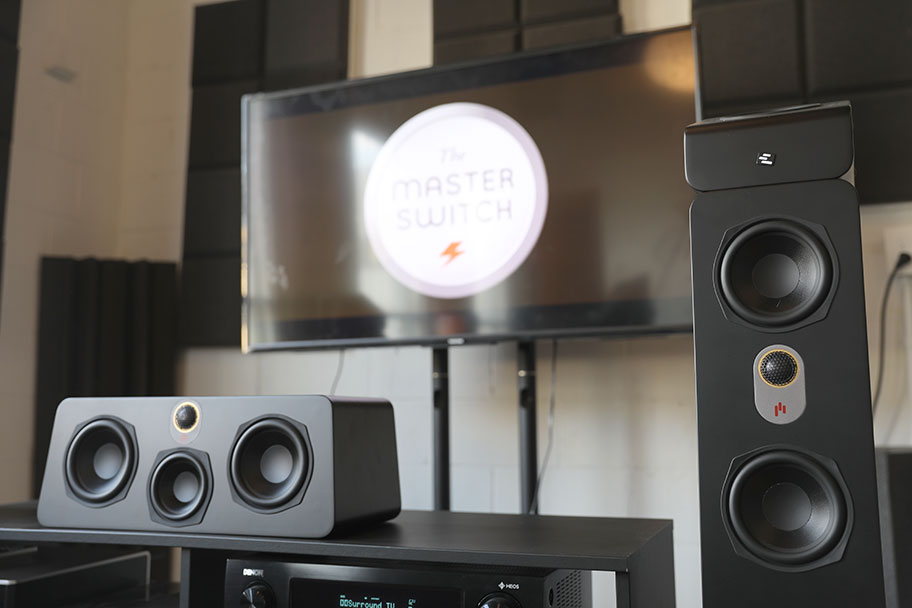
Broadly speaking, there are two main types of home theater setups. The first is known as 5.1 – as in, five speakers and a subwoofer. This set up, which is common in less-expensive packages, consists of three front speakers (left, right, center) and two surround speakers, which can be positioned either to the sides of your couch or at the back. A 7.1 system, which will obviously cost more, uses seven speakers – the three ones in front, plus four surround speakers. These additional speakers can be positioned to the sides and rear of the listening position, but it’s also possible to incorporate height speakers into a 7.1 setup in order to enable a much more immersive surround sound experience. More on this below.
Essentially, whether you go for 5.1 or 7.1 is largely dependent on the size of your room. A bigger room – a space in excess of 200 square feet – will probably be able to incorporate a 7.1 system, whereas a smaller room will be better off with fewer speakers. Obviously, budget will play a role in choosing – as we already mentioned, 5.1 systems tend to be less expensive than 7.1. If you do have money to spend, however, you can easily have a system with more than seven speakers and one subwoofer, like a 9.2 or 11.4 speaker system. Your setup is limited only by your budget and the size of your room. If you want to get an idea of what’s out there, you can start with our list of the best dedicated 5.1 home theater packages.
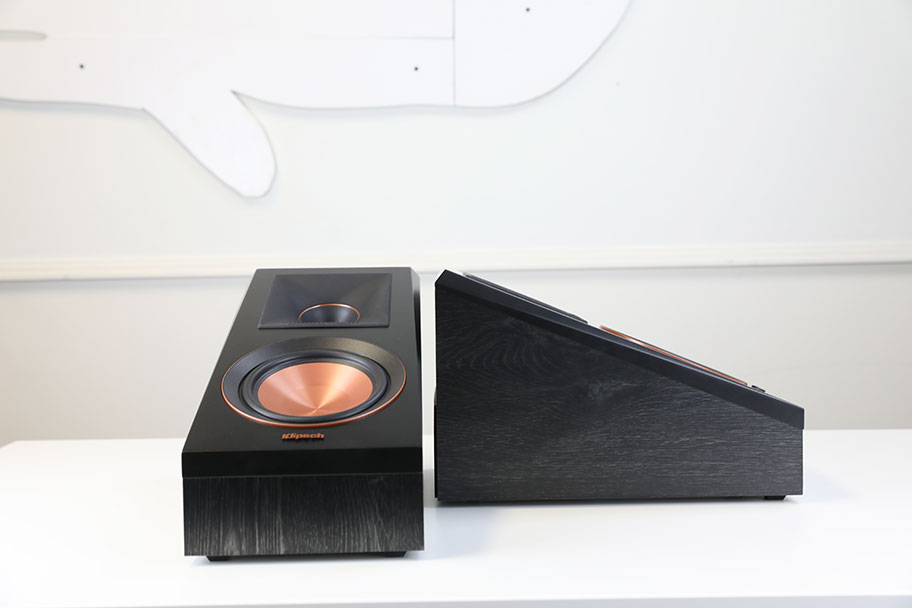
The next question is whether you’re going to be incorporating height speakers into the mix. These are speakers which make it sound as if audio is coming from above your head. They either do this by bouncing sound off the ceiling, or by sitting high up on the wall and shooting it straight down towards you. It sounds like a great idea, and can be hugely rewarding. But before you invest in a set of height speakers, it’s worth knowing about the complexities.
To use height speakers effectively, you need to make sure you have a room that supports them. This means you either need a relatively low ceiling that sound can bounce off, or you need to be comfortable mounting speakers high up on the wall. You also need to think hard about what type of surround sound you’ll be using – you can read more about this in our section on the surround sound codecs below.
Not every system needs height speakers. In fact, if you’re just starting out, you may want to avoid them and concentrate on getting your basic system right. If you do decide to buy height speakers, you have plenty of options. Some front speakers actually come with built-in up-firing height speakers; if that’s not the case, you can definitely buy them separately. Our current favorites are the Klipsch RP-500SA (full review here), which sell for just over $300.
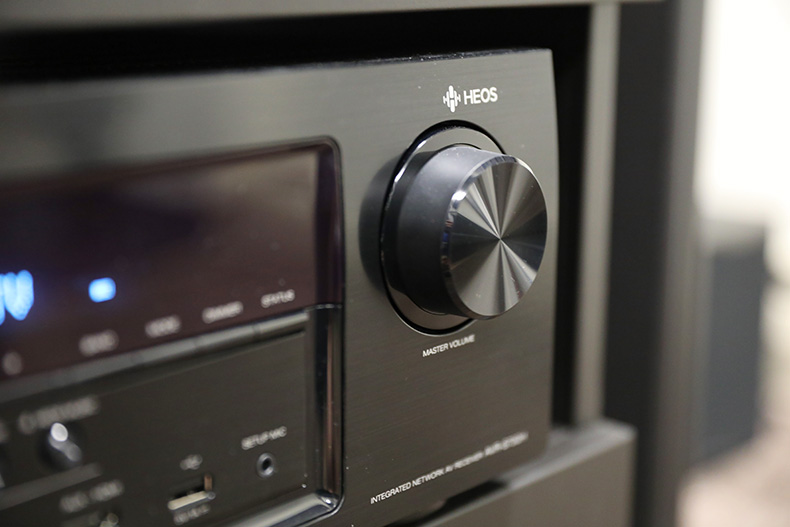
Speakers need power to operate, and they also need to be sent the right signal at the right time. In the world of home theater, those two things are done by an Audio/Video (A/V) Receiver. This is essentially a big, black box that acts as an air traffic controller. It makes sure the right part of the sound gets to the appropriate speaker at the right time, and it also provides enough power for the speakers to reach a sufficient volume. It also transmits video signals from your source to your TV. Unless you have a wireless home theater system, you’re going to need an A/V receiver as well. That’s just a fact.
The good news is that many home theater packages actually come with included A/V receivers. Even if the one you like doesn’t, it’s \easy to get a decent receiver for a few hundred bucks. Setting them up is straightforward, despite the sheer number of cables involved. A good receiver can really transform your setup by taking your speakers to another level, and giving you the best sound quality possible. It’s worth doing some research before you buy, so click the link above to get a sense of what’s out there.
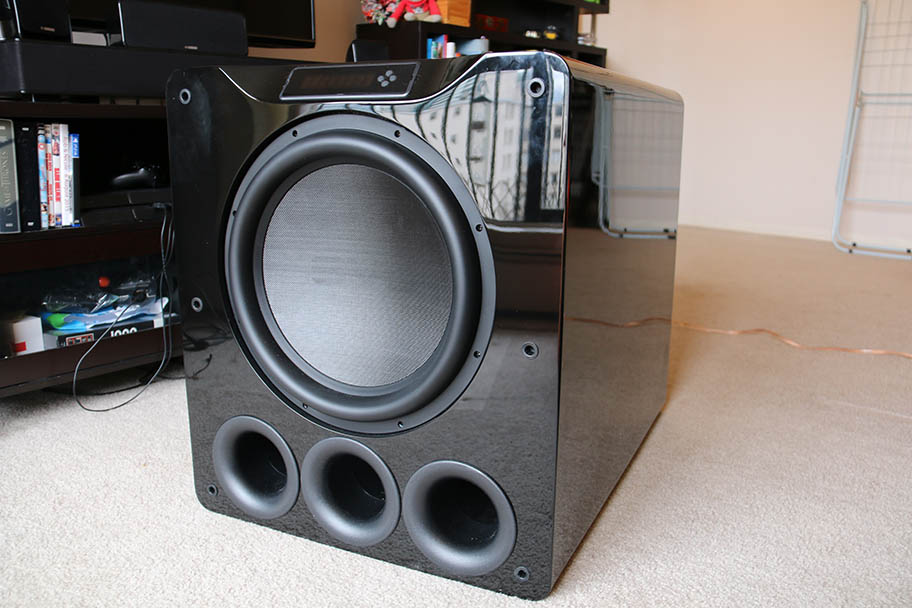
Great home theater systems need great bass. What’s the point of watching a movie if you can’t feel every punch and kick? Not literally, obviously. But unless your speakers have a good low-end, you’ll be seriously disappointed with your system. And to get this, you need a solid subwoofer.
Unlike receivers, which you’ll often have to buy separately, subwoofers are usually included in home theater packages. There are many advantages to this; not just the convenience, but the fact that the subwoofer will have already been acoustically matched to the speakers. This means you’ll get good results right off the bat. However, if you really want to boost your sound quality, it may be worth investing in a separate subwoofer of slightly higher quality. You don’t need to worry about providing power for your sub from your receiver, as almost all modern subwoofers have included amplifiers, and connect directly to a regular wall plug. They needn’t be expensive either – one of our favorite subwoofers right now is the Monoprice 9723, which retails for less than $150.
One thing to note is, to get the best out of your subwoofer, it needs careful positioning and placement in the room. You’ll have to experiment a bit, but fortunately, there are a few tricks you can use to make your life easier.
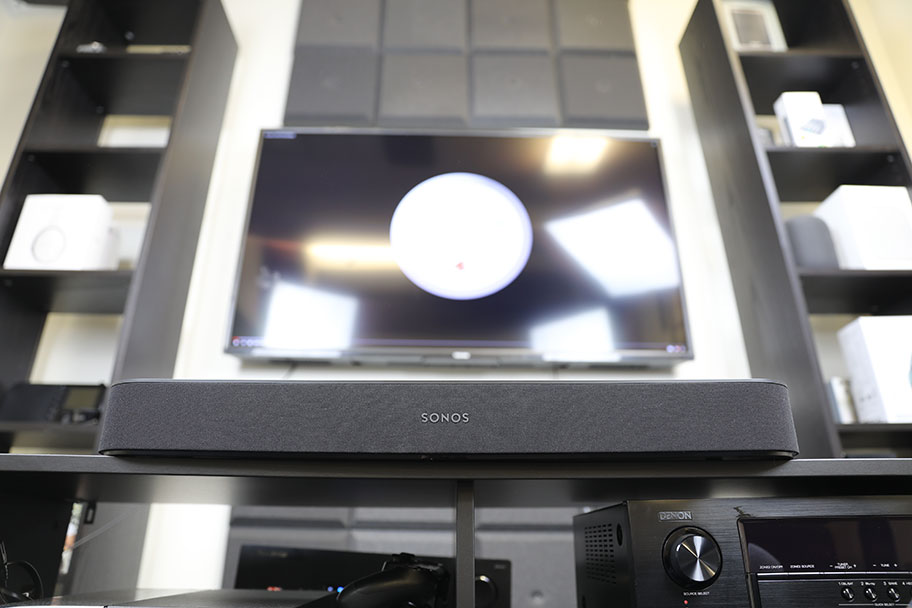
Wireless speakers are gaining massive popularity, so it was only inevitable that home theater companies would start making their speakers wireless. One of the worst parts of traditional home theater packages is the endless cabling. And if you can dispense with that, it can only be a good thing. Right?
The reality, as with so much in the world of home theater, is that the answer is complicated. There’s no denying that wireless speakers are convenient. The Sonos 5.1 Surround Set - a multi-wireless-speaker system - is an absolute dream to use. You’ll be up and running in minutes, and you won’t have to connect a single speaker cable. But there are two main downsides of the Sonos system – and these are downsides that it shares with other wireless systems. Firstly, it’s significantly more expensive than traditional wired systems, and secondly, the speakers aren’t truly wireless – each one still needs to be connected to a power outlet. This means you need multiple plug sockets throughout your room, or very long extension cables. They’re still excellent, and if you invest in such a system, you’ll have a terrific experience. But you need to know the inconvenience going in.
The other thing to bear in mind is that, if you buy a wireless system, it’s very tough to upgrade later. Traditional home theater packages, with separate speaker and amplification components, can easily be upgraded. For example, if you find yourself with enough money to buy a larger pair of floorstanding speakers, it’s very easy to swap them in, regardless of the brand. You can’t do this with current wireless systems, which tend to not play well with others.
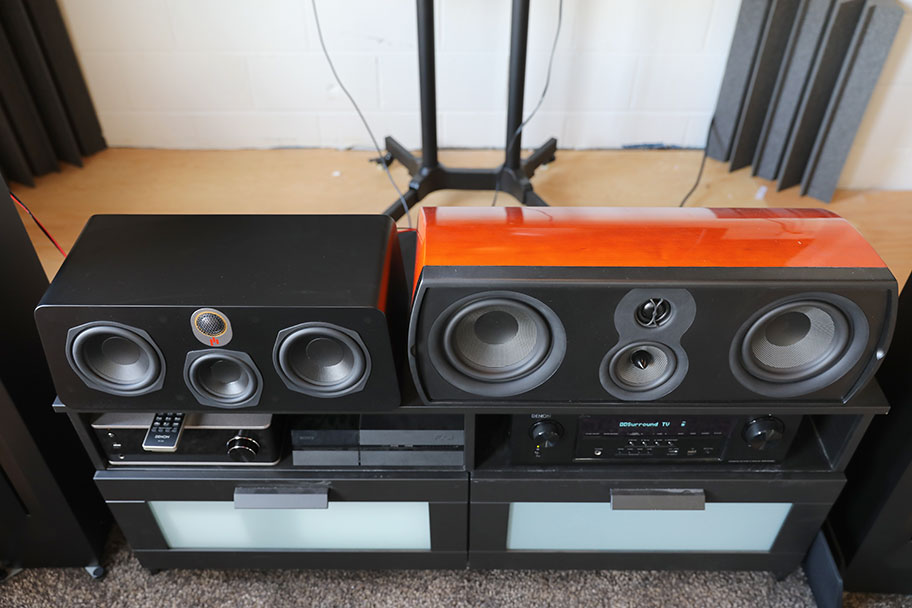
Before you buy a home theater package, it’s worth thinking about the type of surround sound you plan on listening to. Surround sound doesn’t just happen – a piece of software needs to decode the incoming audio signal and route it to the correct speakers. That software is called a codec. Knowing a bit about codecs is going to make your life a lot easier – trust us.
We’ll get into the why in just a second. Let’s talk about the what first. Most people will only ever encounter two big-name brand codecs: DTS:X, and Dolby Atmos. DTS:X is designed for systems without height speakers, using a system DTS calls 'multi-dimensional audio' to provide a realistic experience. It’s very much the most common codec, as it works well on less expensive 5.1 systems. However, Dolby Atmos requires dedicated height speakers to work, and is only suitable for 7.1 setups or larger. Dolby Atmos also sounds terrific, with a heightened level of realism. While DTS: X and Dolby Atmos are the most common codecs, there are actually dozens available. Don’t feel like you need to mess with the others, though; a basic knowledge of whether to go for DTS:X or Dolby Atmos is all you need.
Why do you need to know about other codecs? To save money. There’s no point in buying an expensive A/V receiver that can handle Dolby Atmos if you don’t plan on having height speakers. Equally, you’ll definitely want to get one if you think you’ll be upgrading later. Be warned that, for any of these surround sound programs to work, you’ll need a source – like a Blu-ray disc – with a soundtrack encoded in either Dolby or DTS. Don’t stress if you don’t have this kind of source – your audio will still sound good no matter what
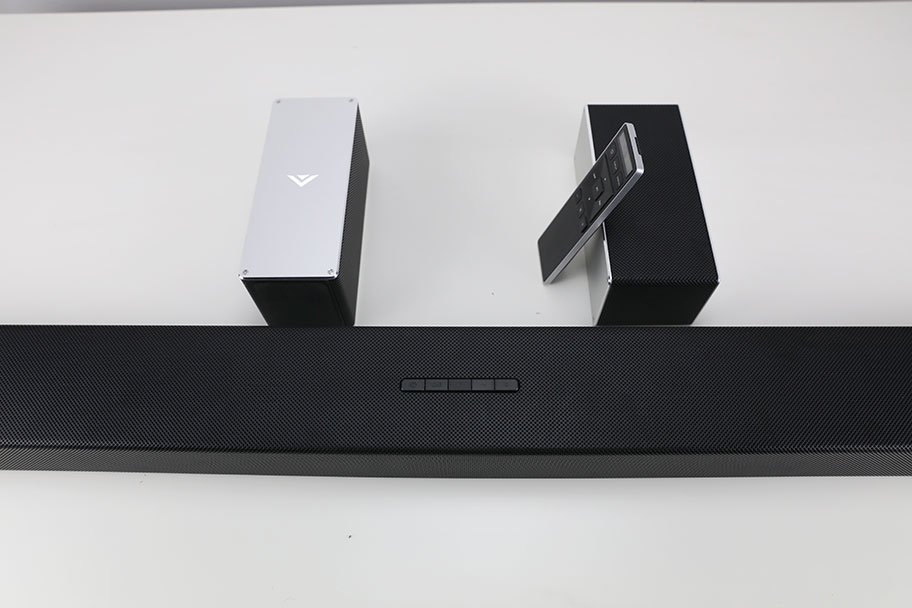
Traditional home theater setups have three speakers lined up in front of the listening position: a left speaker, a right speaker, and a center speaker (mostly for dialogue). But there’s nothing to say you can’t replace all three of those speakers with a soundbar. This means you get a convenient, single-box solution that’s easy to set up, will almost certainly deliver good sound, and which might even come with dedicated surround speakers – like this VIZIO SB46514-F6 (full review here).
There’s absolutely nothing wrong with this kind of setup. It can be a fun and straightforward way to build your home theater system. Bear in mind, however, that the sound quality is unlikely to be as clear or as powerful as a traditional multi-speaker setup. That being said, there are relatively few downsides. So, if you do want to minimize the number of speakers in your setup, you should definitely consider getting a soundbar.
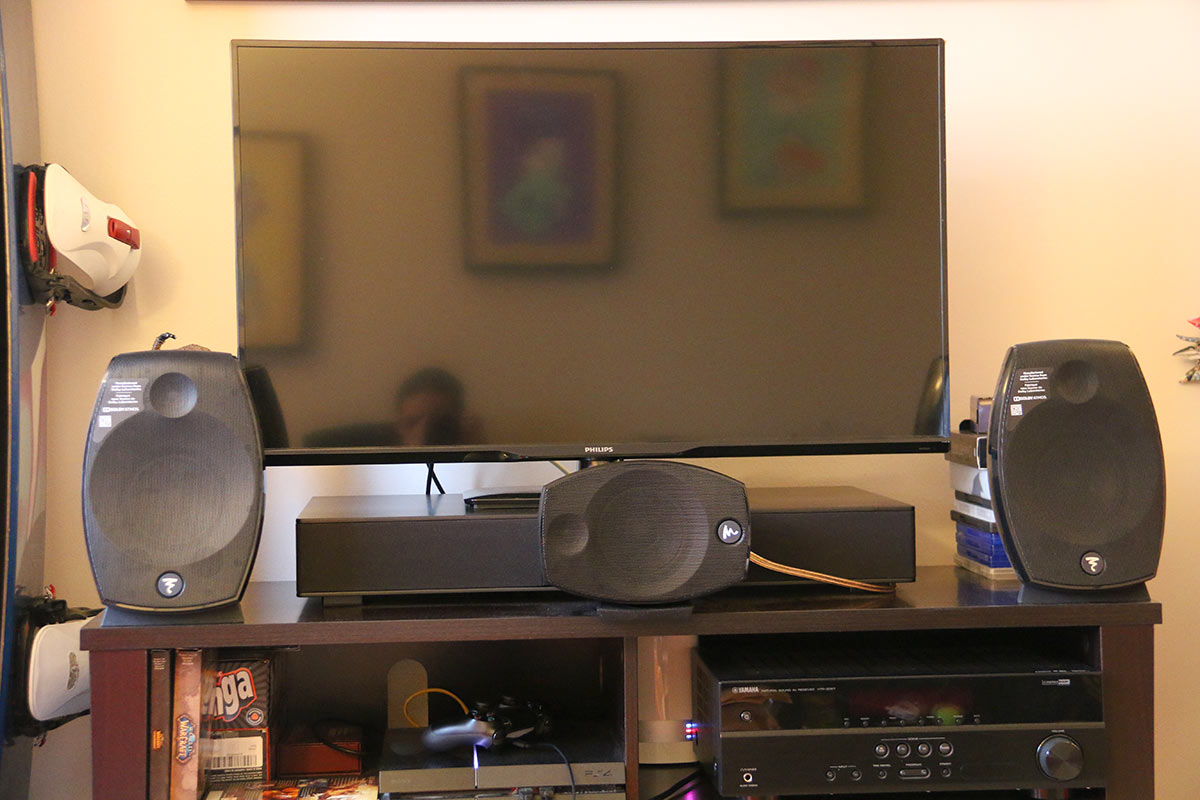
Home theater systems are, very obviously, for watching movies and series, and playing video games. But you can use them to enjoy some of your favorite music as well. While you won’t be able to make use of the multiple surround channels in a home theater system with all music, a traditional stereo piece will still play quite happily through your receiver and your two front speakers. There are also a few artists who release their albums in 5.1! In this way, a home theater system can pull double duty. We would caution that it probably won’t sound quite as good as a dedicated hi-fi system, and you shouldn’t buy a home theater system with the intention of using it for music alone. If that’s the case, you may want to look at a good stereo amplifier, rather than a receiver.
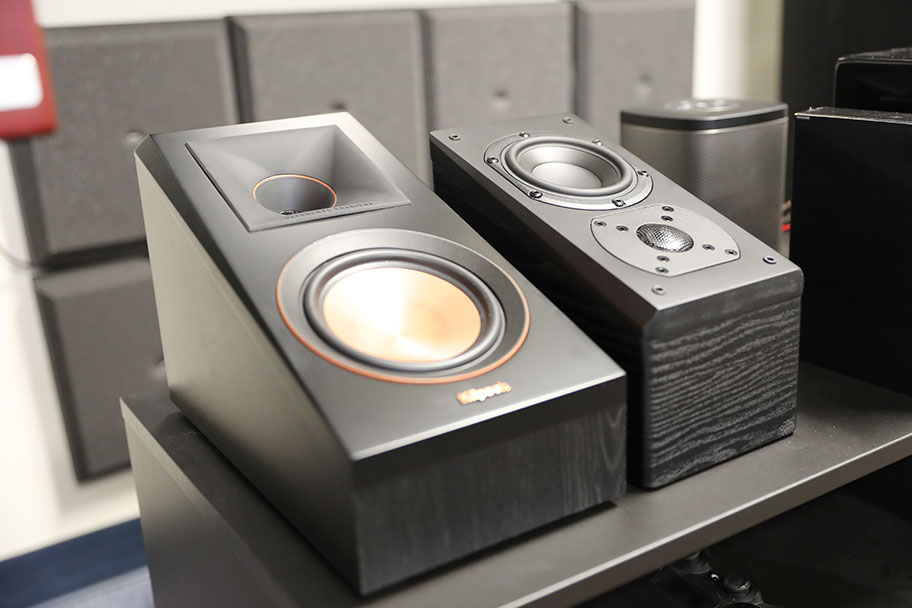
You’re going to need to buy a few extra pieces for your home theater set. Unfortunately, that’s just the reality of owning one. The good news is that these few things aren’t expensive, and they will make your life a lot easier.
The first is speaker cabling to connect your speakers to your receiver. Any brand is fine, as long as the cable is around 16 gauge. To connect the wire to the speaker, you’ll have to strip the insulation, and either connect the wires directly to the binding posts on the back of the speaker, or use a banana plug that allows you to just plug it in. Of course, you could always buy speaker cables with banana plugs already attached, but where’s the fun in that?
You probably also need to buy speaker stands, even if you just need them for your surround sound speakers. Speakers should always sit at ear level, and a set of stands will make that easy. In our testing room, we use Sanus stands. It may also be worth investing in dedicated acoustic foam for your living room, but if you’re just starting out in the world of home theater, you can probably avoid this.
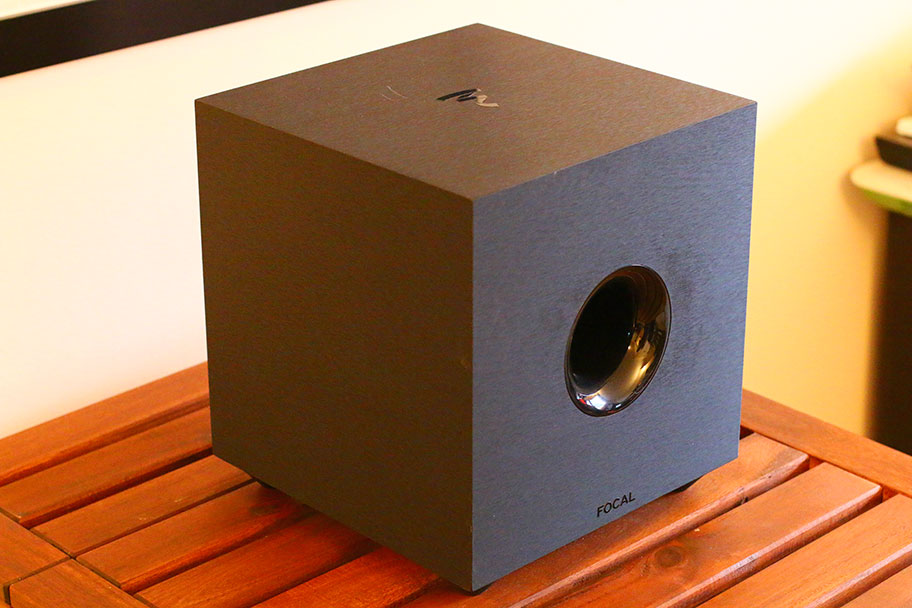
Home theater systems are typically viewed as expensive – after all, each one will have at least five speakers and very possibly a subwoofer as well. However, recent advances in technology mean that you can actually get an exceptional home theater system for as little as $190, like the Logitech Z506. If you can, we’d advise spending a little more. The real leaps in quality happen around the $400 to $500 mark and you get significantly better sound with more money.
Surprisingly, you can buy complete home theater systems from big box electronics stores, which is a welcome development. You will have a much better selection online, however, particularly from Amazon and specialty retailers. Don’t be afraid to shop around to find a good setup.